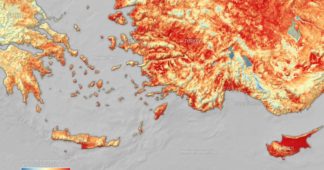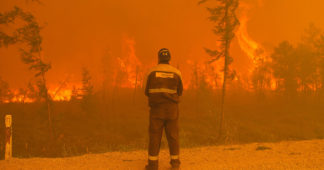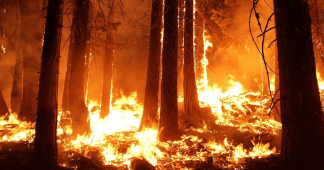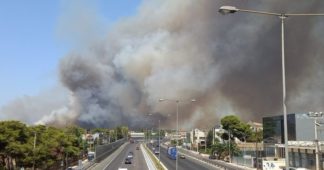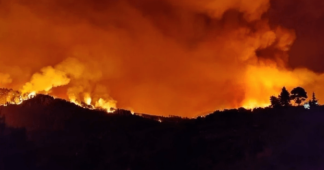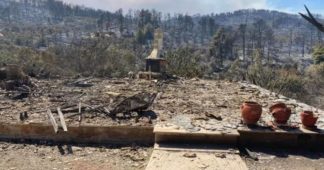Jul 27, 2023
Wildfires in Greece released a record 1 megaton of carbon emissions between July 1 and July 25, 2023, the EU Copernicus Atmosphere Monitoring Service said.
That was nearly double the previous July 2007 record, with the smoke plumes fouling air quality in regions downwind.
The intense wildfires burning in Greece since 17 July have quickly become the worst recorded since at least 2003 for the month of July. Data from the Copernicus Atmosphere Monitoring Service’s (CAMS) Global Fire Assimilation System show that the wildfire emissions for Greece overall increased quickly on 17 July, with a Total Fire Radiative Power (red bars) very high compared to the average of the previous 20 years (grey bars). The largest wildfires started by that date west of Athens and the island of Rhodes, forcing nearly 20,000 people to evacuate, in what’s considered the largest evacuation from a wildfire in the country, according to the Ministry of Climate Change and Civil Protection.
The largest wildfires started by that date west of Athens and the island of Rhodes, forcing nearly 20,000 people to evacuate, in what’s considered the largest evacuation from a wildfire in the country, according to the Ministry of Climate Change and Civil Protection.
Large wildfires erupted also in Attica, near Athens, but there were smaller fires across the country, including Evia and Corfu, coinciding with a record-breaking heatwave in the Mediterranean.
As a result, the CAMS GFAS data show the highest wildfire carbon emissions in July recorded for Greece, by a very large margin, with over 1 megatonne of carbon emitted until 25 July.
In terms of the area burnt, on 22 July the Greek fire season was on pair the highest figures on record, with more than 35,000 hectares burnt, according to the European Forest Fire Information System EFFIS. Areas of Spain, France, Italy, Greece, Turkey and Northern Africa are in “Very Extreme Danger” on the EFFIS’ Fire Danger Forecast.
The Copernicus programme Sentinel satellites have captured images showing the extent and intensity of the Greek wildfires. This Sentinel-2 satellite image shared by the EU Commission’s Directorate-General for Defence Industry and Space DEFIS communications team shows the large scar of the wildfire in Attica on 19 July.
Greece is undergoing its longest heatwave on record, according to senior officials and the forecast shows little ease for the coming days so it is expected a further rise in emissions. The CAMS PM2.5 forecast show continued emissions for the coming days, especially in Rhodes.
 source: copernicus.eu
source: copernicus.eu
We remind our readers that publication of articles on our site does not mean that we agree with what is written. Our policy is to publish anything which we consider of interest, so as to assist our readers in forming their opinions. Sometimes we even publish articles with which we totally disagree, since we believe it is important for our readers to be informed on as wide a spectrum of views as possible.
